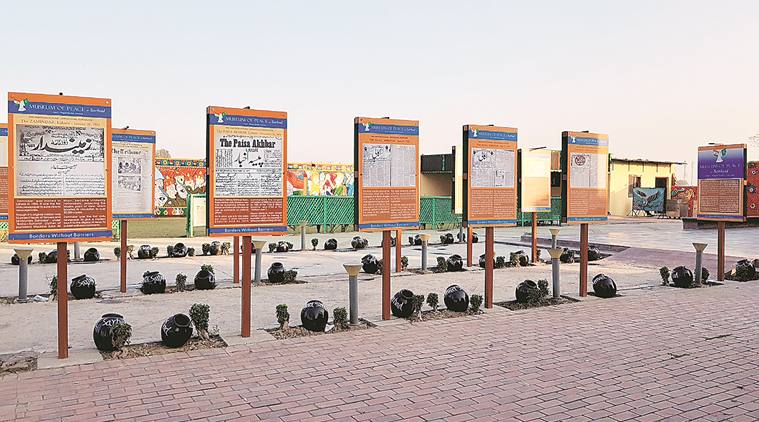Published: December 30, 2018 4:50:26 am
Reading the Fine Print
The Museum of Peace unveiled a gallery of rare images of vernacular newspapers from pre-Partition Punjab

The Museum of Peace, which is located within the Sarhad restaurant complex, less than two kms from the Attari-Wagah border in Amritsar, is arguably India’s first open-air, walk-through, storytelling museum, with no entry fee. It has 48 large panels mounted on high pedestals that depict pre-Partition Punjab in three sections, beginning with the rule of Maharaja Ranjit Singh, the British colonial period, and the bloodshed in Punjab in the months preceding the Partition.
The Museum, this week, unveiled a new gallery of rare images of old vernacular newspapers published in pre-Partition Punjab. Titled “Pre-Partition Punjab — Vernacular Press”, the gallery displays issues of some of the oldest Urdu dailies, including The Paisa Akhbar, The Zamindar, The Daily Inquilab and The Akali — all from archival sources in Lahore. First launched in 1885, at a price of one paisa per copy, Paisa Akhbar blazed a new trail in journalism and by 1898 commanded a high circulation of 5,000 copies. Zamindar, which started in Lahore in 1903 with a mission to project issues of farmers and landowners, eventually turned stridently nationalistic, projecting the Muslim point of view, which boosted its circulation to over 30,000 copies. The first issue of The Akali was published in Punjabi from Lahore on May 21, 1920. In October 1922, it merged with Pradesi Khalsa, a daily run by Tara Singh. Its printing was later done in Amritsar, where it was published in Urdu-Persian script, with Singh as the editor.
Conceived, designed and curated by retired IAS officer DS Jaspal, the Museum of Peace is a celebration of the common composite culture of pre-Partition Punjab in general and Amritsar-Lahore in particular. Sarhad, the restaurant, specialises in Amritsari-Lahori cuisine, with a mission to promote “peace through food”. Two mini vans, parked outside, have been painted in Pakistani truck art by renowned truck artist Haider Ali with “India-Pakistan Friendship” displayed on a board in front.
According to Jaspal, the role of the vernacular press in pre-Partition Punjab and its critical influence on events leading to 1947, is a neglected area of study. “By the first quarter of the 20th century, Hindus, Muslims and Sikhs had their own media, which used nationalism as a platform to project and promote the interests of each community,” says Jaspal, who served as the Information Department Secretary in Punjab for several years. “Closer to 1947, the inflammatory and polarised content was pushing up circulation figures and it is not clear whether content was driving circulation or circulation was driving the content,” he adds.
The Urdu of the earliest vernacular papers, like Paisa Akhbar and Zamindar, had a lot of Persian content, which was gradually replaced by Urdu. Jaspal proposes an academic collaboration between universities on both sides of the border to study the growth and impact of the vernacular press in pre-Partition Punjab. “Otherwise, we may have many mini-1947s silently incubating,” he says.






















No hay comentarios:
Publicar un comentario